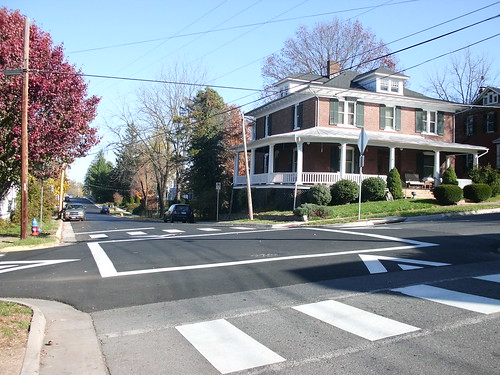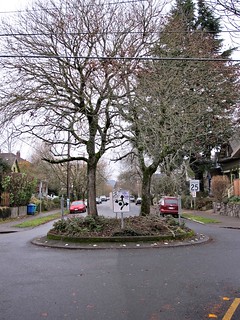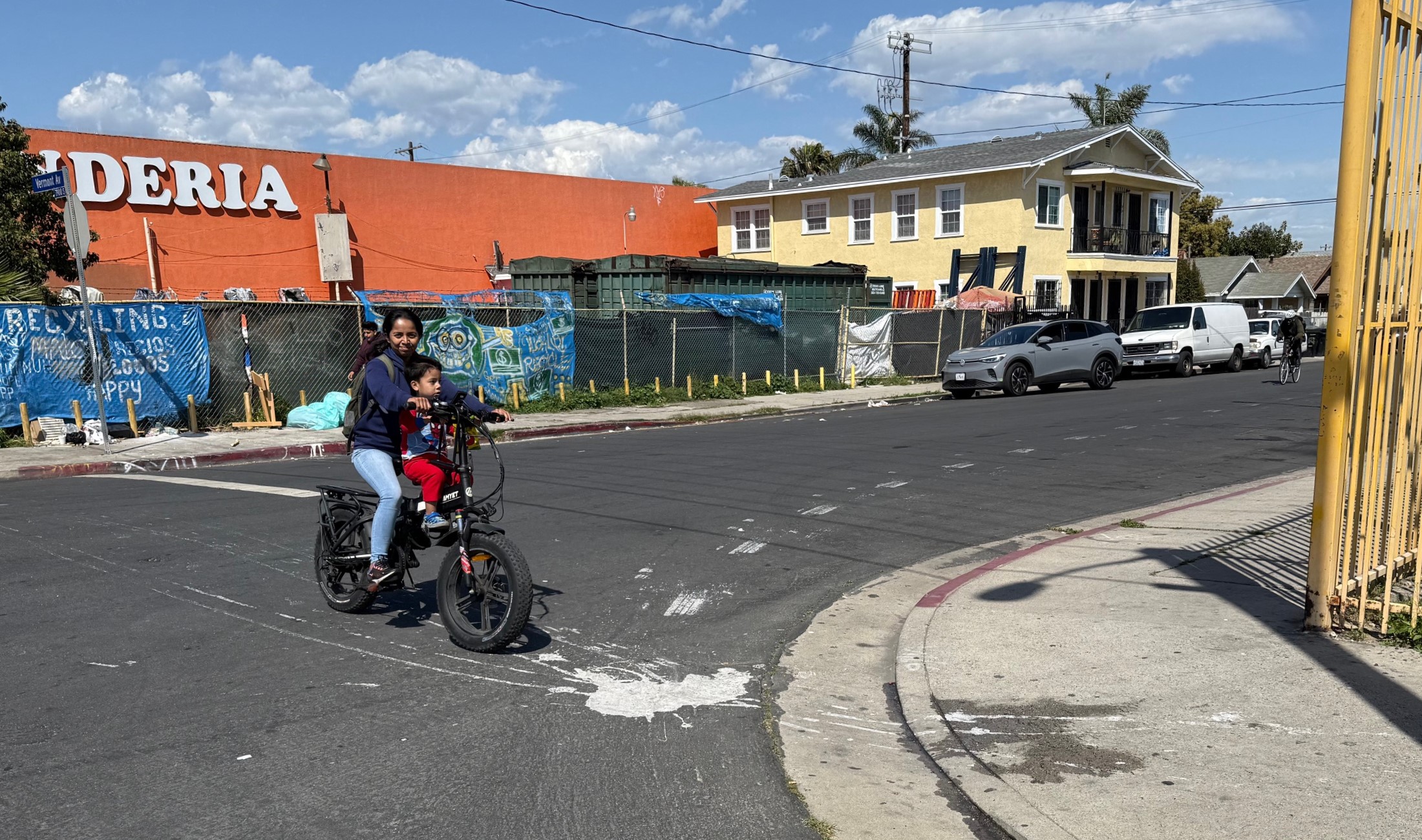In my first post discussing new stop signs to be installed on Broadway east of 26th St., I set up some of the context for why stop signs can be frustrating to bicyclists, how social conventions of both drivers and bicyclists can vary from person to person. The Santa Monica Daily Press has also picked up the topic, in a recent article which I am quoted along with several others on the proposed new stop signs. Something I also didn't touch on before and which I recall from reading Tom Vanderbilt's Traffic, is the fine line beyond a threshold where too many stop signs reduces compliance because of the tendency for some drivers to speed between stops to try and compensate for having to stop.
So I’ve placed myself in the position of being opposed to overly frequent stop signs, particularly on bikeway corridors where we are encouraging to be the go to bike routes.
What would I propose doing instead? I don’t have an easy answer for that, at least not as easy of a public process. I wish we were collectively a little more open to a broader tool kit of traffic solutions that are frequently employed abroad, but rarely in the United States.
One of my favorite traffic control devices which I had never seen before until traveling through some towns in Northern France a few years ago, is speed tables, and raised intersections. I saw raised intersections and speed tables employed in lower traffic volume neighborhood areas, much like where we often see 4 way stop signs, that forces vehicles to slow at and through intersections, but not necessarily requiring a full stop if the coast is clear. We do have them in the U.S. apparently too, but I have yet to personally encounter one in the wild in the States.

Unlike speed bumps, speed tables are broad and typically flat in their raised surface area, making them a little less jarring to go over. Raised intersections or speed tables can also be used to elevate crosswalks, which removes the need for going up and down ramps for pedestrians, improves visibility of those crossing, and the raised surface area encourages drivers to approach intersections or raised mid-block crossings much more slowly.
Between small scale roundabouts, speed tables, chicanes, and textured road surfaces (this brick street in Portland leaves smooth strip for bikes) that discouraged speeding, it was possible to ride or drive for many miles in Northern France, through and between towns and cities of various scales without encountering stop signs, and very few traffic lights. Yet everything appeared to operate pretty smoothly and calmly, both in a car as I was in for a time with a tour escort for a while, and by long distances on a bike. I have not had much international travel experience, but it was eye opening to see such a variety of traffic calming strategies used in context, and in some cases frequently alternated to create a variety requiring more vigilant attention on the part of drivers by frustrating any lapsing toward an autopilot mentality.
That mix of tool sets, such that through a given corridor you might encounter different types of traffic calming, seems important in my observations and reading, and enabling an outcome in the mix of things that just one strategy on its own might not have.
Brian Addison recently spoke up on Streetsblog for more neighborhood scale roundabouts in Long Beach, and I share a similar admiration for them in appropriate contexts. If the diameter of the circle is sufficient for the space, it forces a slowing, and because one must yield to anyone in the circle, it requires a negotiation of entering the space. Also important is they force all right turns, and thus eliminate making left turns to go left, which are the cause of many severe collisions, and a type of turn movement that becomes more difficult with age for older drivers.
Roundabouts (which are recommended in the studies cited by the link above) require slowing of high end speeds, but when not combined with stop signs, they also move more traffic and can be a net benefit to trip times compared with stop regulation. Another benefit of roundabouts, in the environmental column, is that they break up having a solid plane of asphalt across the middle of the intersection, allowing for a little boost to water retention and reducing runoff.
One of the things which works against thee implementation of roundabouts is the disparity between actual safety outcomes, and the nervousness and tension they create psychologically for drivers. Drivers feel like they are more hazardous. In all the research I've seen, they have safer outcomes, especially when considering collisions severity, which is where lives are at greater risk. I've heard mostly complaints about our one little roundabout on 26th St. from drivers, which occasionally makes an appearance as a punching bag in comments by council member Holbrook.
When I was talking about differences in the driving experience in Germany as compared with the United States recently with German tourists (who had just done a long U.S. road trip) in an Amtrak dining car, they emphasized the way drivers in the U.S. are more care-free, and in Germany, and much of Europe, drivers are more "stressed" as they called it, searching for the right word. They have to pay more attention to what they are doing. We make driving feel like an easier task, and that is sometimes a value choice we make at the expense of other potential priorities.
Another issue on Broadway through what I often call the college streets (Princeton St., Harvard St., Yale St. etc.) is through traffic of people trying to rush on a street perhaps best suited as predominately local access. We've got people who try to speed through an area with a lot of people crossing at frequent marked crosswalks with dogs, jogging, and bicycling route connections, and I know many pedestrians have issues with people stopping or slowing enough.
Just one traffic diverter anywhere along that stretch would likely drastically alter outcomes by shifting some of those rushing through way trips better suited to adjacent streets. We have a grid that highly favors east/west options for vehicles over north/south, with Wilshire Blvd. Santa Monica Blvd., and Olympic Blvd. all designed for high volume car traffic, and all in addition to the big one, the 10 freeway. It wouldn’t be the end of the world if we diverted off a few of the car trips trying to make Broadway (and later W Ohio Ave. on city of L.A. side) into a little neighborhood speedway.
I saw such diverters designed for only bike through way access successfully employed on many of the neighborhood green way streets in Portland, OR, which seemed to be a common strategy for reducing traffic speeds and volumes on their “neighborhood greenways”. Those more inclined to the Bill Bauer outlook on life in Santa Monica might go into heart palpitations upon hearing of a street prioritizing throughway access for bicycling over car travel. So the public process (which also means more dollar bills) by which to do anything like this will end up being a lot more extensive if we pursue the idea. Not to mention that concrete in the ground, which most of these ideas I’ve outlined involve, cost more to implement and build compared with paints or stock signage as well.
This is not a completely exhaustive list, and there is a lot of subtly to the most appropriate context for all of these tools, but I hope we can start having a long term conversation, with action to follow, around life beyond always relying on stop signs for managing traffic safety concerns.










